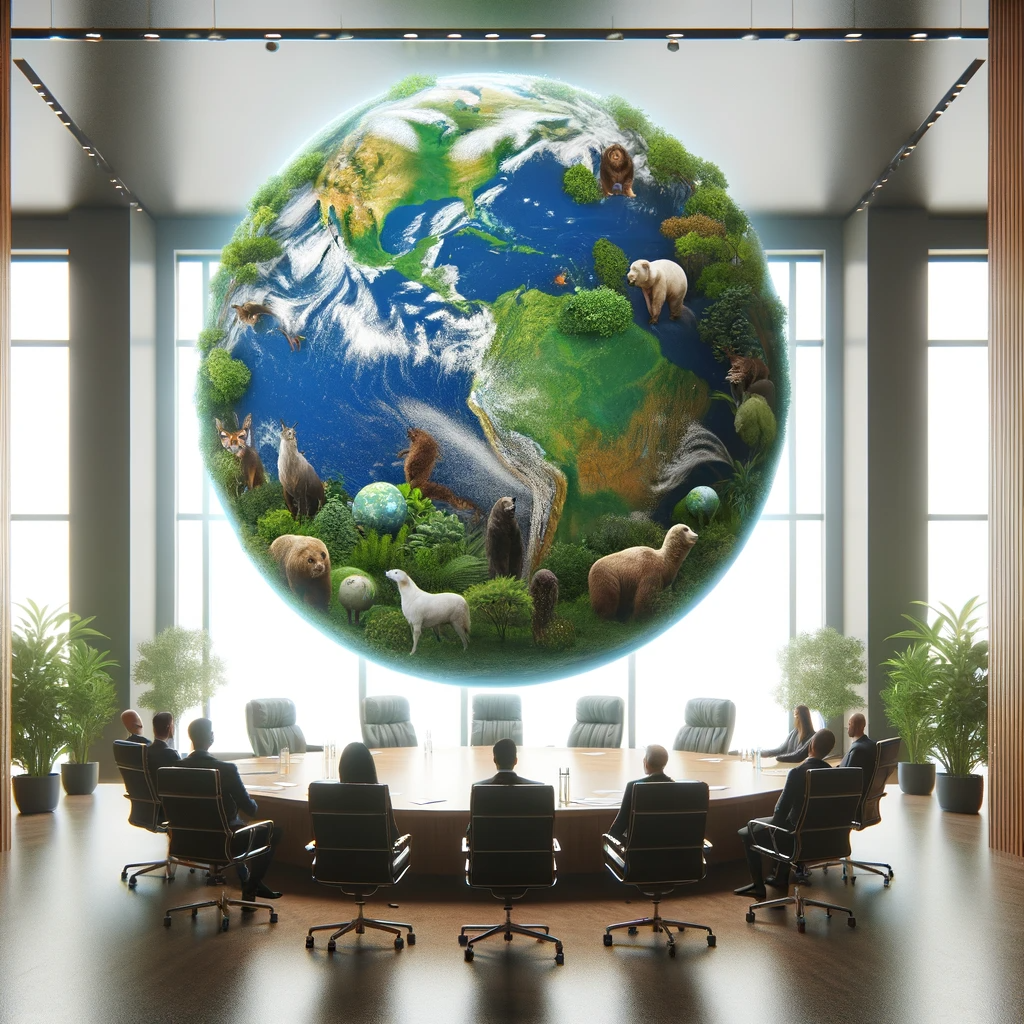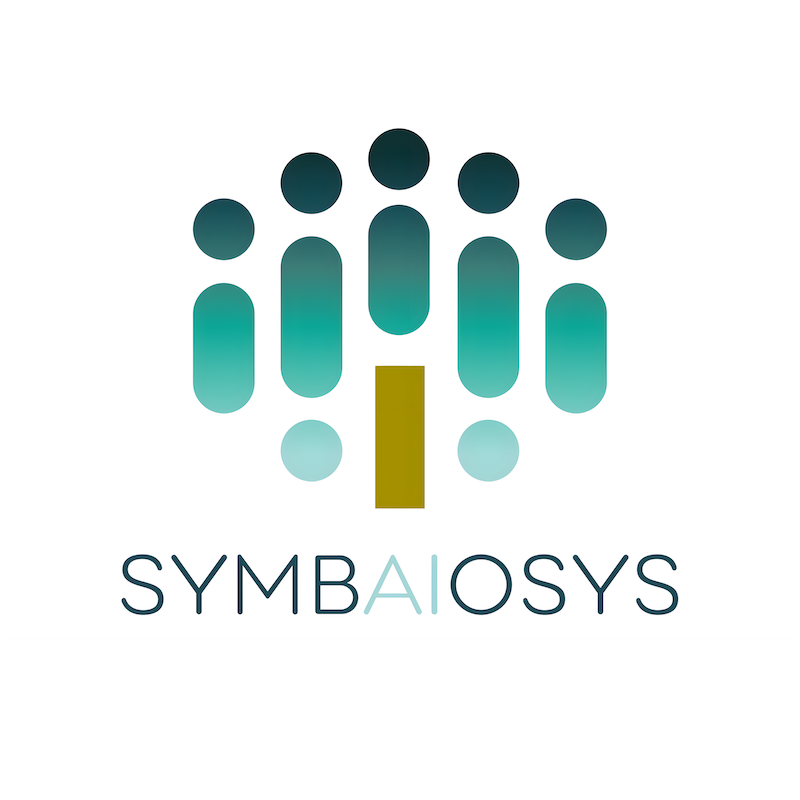
Ambition
A planetary governance system that honors the intrinsic value of nature and builds resilience against economic and geopolitical instability.
Problem
The world faces a dystopian challenge. Despite the estimated value of natural capital exceeding $140T —1.5x global GDP—there exists an alarming $830B nature finance gap. Moreover, almost $7T of finance each year supports activities that directly harm nature. Mobilizing nature finance is a necessary short-term fix to prevent biodiversity collapse. However, the root problem is our undervaluation of nature, our anthropocentric economic and governance models, and our perception of separateness from the natural world.
Solution
To shift this paradigm we must, in the words of Buckminster Fuller, build “a new model that makes the existing model obsolete”. Symbaiosys proposes Earth.gov as a collective of values-aligned organizations working to shift our economic and political paradigms from extractive to conscious, collaborative, and rights-based.
This interspecies bio-regional governance model envisions a global federation of ecoregions, where humans and nature are recognized as equal shareholders entitled to dividends for their contributions. Utilizing Web 3 technology, the interconnected federation will accumulate wealth through various financial mechanisms, including a sovereign wealth fund for nature, an Initial Public-Planet Offering (IPPO), and a nature-based currency. Nature’s dividends will be reinvested to purchase and restore land, and to establish land sovereignty.
Potential
Throughout history, when undervalued services were corrected, we’ve seen profound socio-economic, and at times moral, transformations. Correcting the value of nature could be the most significant transformation of our lifetime—revolutionizing contracts, markets, and accounting systems. Moreover, institutionalizing the true value of nature in financial decision-making is additive; it will open new markets, create trillions of dollars in value, and build a new economic model that is conducive to life.
Furthermore, most wars are rooted in territorial disputes. Climate change will inevitably spur an influx of unprecedented conflicts as water and food become scarcer, and migration becomes essential for survival. In a bio-regional federation, the earth is sovereign and we, as citizens, belong to the land; we don’t own it. A bio-regional approach could potentially unite communities under a new identity, transcending post-colonial man-made boundaries and instead reinforcing global peace and climate justice.
Why Now?
Almost 200 countries agreed to protect 30% of land and sea by 2030 under the Kunming-Montreal Global Biodiversity Framework (GBF) as we alarmingly near a point of no return. While environmental degradation is largely blamed on deforestation and the fossil fuels industry, the business of war is comparatively absent from mainstream discussions and accountability. All war should be considered a crime against humanity and nature, with its devastating social and ecological atrocities.
Militaries account for around 5.5% of global greenhouse gas emissions , ranking as the fourth largest national carbon footprint in the world, even greater than that of Russia. In wartime, land, soil, water, and other natural resources are contaminated exacerbating health, food insecurity and socioeconomic disparity. Displacement also often goes hand in hand with deforestation as the vulnerable seek fuel and shelter. Even before the wars in Gaza and Ukraine, conflict-related deaths had risen by 45% according to the Global Peace Index. Today, the world is facing the highest number of violent conflicts since the Second World War and 2 billion people — a quarter of humanity — live in places affected by such conflict, according to the United Nations.
How it Works
Stakeholders will have the option to become part of an interspecies, global federation of ecoregions governed by nature. Under this structure, both nature and the human members are considered citizens and shareholders, entitled to dividends for the human, financial or natural capital they provide.
Each person, organization, and ecosystem will have a digital passport and tokens based on their respective contributions—also allowing for migration of climate refugees. Web 3 technology will facilitate transparency, smart contracts for PES, project verification, collaboration, and financial, human and technological resource-sharing. To avoid crypto volatility, a nature-based currency will be established backed by the federation’s central bank. To avoid “overshoot” of ecological resources a reserve of nature tokens will be untradeable, and may be adjusted based on the state of the environment and Earth’s biocapacity.
The connected federation of ecoregions will accrue wealth through a sovereign wealth fund for nature, the launch of an Initial Public-Planet Offering (IPPO), green bonds, a nature-based currency and other mechanism. Nature’s dividends will be used to purchase additional land for restoration and establish sovereignty.
While Earth.gov will initially operate as a digital entity, there is potential to apply for—or create a new—form of legal recognition; perhaps as a dual sovereign entity under the United Nations to avoid instigating new conflicts or separatist movements from existing governments.
Context
Every company is cofounded with nature and every government is in a public-planet-partnership with nature for public services. Yet, legal mechanisms neither recognize nature’s economic rights as a shareholder; nor as a sovereign entity with which companies and governments can equitably trade good and services. Moreover, with the inevitable influx of climate migration, we will need a citizenship of land belonging, rather than manmade post-colonial territorial boundaries of land ownership.
There are indeed tens of thousands of organizations working with, and for, nature worldwide; on the ground conservation and restoration, financing, tech and MRV, policy making and others. Yet, like with most social and environmental issues, these geographically scattered organizations constitute a minority in their respective jurisdictions. Operating separately, they cannot harness the full potential of their collective power and influence as a unified bloc.
How to Get Involved
1. Become a founding co-creator to define a roadmap, identify a pilot, and crowdsource other collaborators under four core overlapping verticals: Finance, Governance, Restoration, and Data & Tech.
2. Act as a convener and host a co-creation workshop with collaborators (including indigenous communities and the global South).
3. Contribute funding to the co-creation process.
4. Provide intellectual input/advisory.
